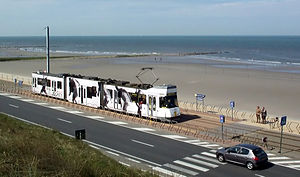Coast tram
| Coast tram | |||||||||||||||||||||||||||||||||||||||||||||||||||||||||||||||||||||||||||||||||||||||||||||||||||||||||||||||||||||||||||||||||||||||||||||||||||||||||||||||||||||||||||||||||||||||||||||||||||||||||||||||||||||||||||||||||||||||||||||||||||||||||||||||||||||||||||||||||
|---|---|---|---|---|---|---|---|---|---|---|---|---|---|---|---|---|---|---|---|---|---|---|---|---|---|---|---|---|---|---|---|---|---|---|---|---|---|---|---|---|---|---|---|---|---|---|---|---|---|---|---|---|---|---|---|---|---|---|---|---|---|---|---|---|---|---|---|---|---|---|---|---|---|---|---|---|---|---|---|---|---|---|---|---|---|---|---|---|---|---|---|---|---|---|---|---|---|---|---|---|---|---|---|---|---|---|---|---|---|---|---|---|---|---|---|---|---|---|---|---|---|---|---|---|---|---|---|---|---|---|---|---|---|---|---|---|---|---|---|---|---|---|---|---|---|---|---|---|---|---|---|---|---|---|---|---|---|---|---|---|---|---|---|---|---|---|---|---|---|---|---|---|---|---|---|---|---|---|---|---|---|---|---|---|---|---|---|---|---|---|---|---|---|---|---|---|---|---|---|---|---|---|---|---|---|---|---|---|---|---|---|---|---|---|---|---|---|---|---|---|---|---|---|---|---|---|---|---|---|---|---|---|---|---|---|---|---|---|---|---|---|---|---|---|---|---|---|---|---|---|---|---|---|---|---|---|---|---|---|---|---|---|---|---|---|---|---|---|---|---|---|---|---|
|
Kusttram railcar in Domein Raversijde
| |||||||||||||||||||||||||||||||||||||||||||||||||||||||||||||||||||||||||||||||||||||||||||||||||||||||||||||||||||||||||||||||||||||||||||||||||||||||||||||||||||||||||||||||||||||||||||||||||||||||||||||||||||||||||||||||||||||||||||||||||||||||||||||||||||||||||||||||||
|
Tram in green ( interactive map )
| |||||||||||||||||||||||||||||||||||||||||||||||||||||||||||||||||||||||||||||||||||||||||||||||||||||||||||||||||||||||||||||||||||||||||||||||||||||||||||||||||||||||||||||||||||||||||||||||||||||||||||||||||||||||||||||||||||||||||||||||||||||||||||||||||||||||||||||||||
| Route length: | 67 km | ||||||||||||||||||||||||||||||||||||||||||||||||||||||||||||||||||||||||||||||||||||||||||||||||||||||||||||||||||||||||||||||||||||||||||||||||||||||||||||||||||||||||||||||||||||||||||||||||||||||||||||||||||||||||||||||||||||||||||||||||||||||||||||||||||||||||||||||||
| Gauge : | 1000 mm ( meter gauge ) | ||||||||||||||||||||||||||||||||||||||||||||||||||||||||||||||||||||||||||||||||||||||||||||||||||||||||||||||||||||||||||||||||||||||||||||||||||||||||||||||||||||||||||||||||||||||||||||||||||||||||||||||||||||||||||||||||||||||||||||||||||||||||||||||||||||||||||||||||
| Power system : | 600 volts = | ||||||||||||||||||||||||||||||||||||||||||||||||||||||||||||||||||||||||||||||||||||||||||||||||||||||||||||||||||||||||||||||||||||||||||||||||||||||||||||||||||||||||||||||||||||||||||||||||||||||||||||||||||||||||||||||||||||||||||||||||||||||||||||||||||||||||||||||||
| Opening: | July 5, 1885 | ||||||||||||||||||||||||||||||||||||||||||||||||||||||||||||||||||||||||||||||||||||||||||||||||||||||||||||||||||||||||||||||||||||||||||||||||||||||||||||||||||||||||||||||||||||||||||||||||||||||||||||||||||||||||||||||||||||||||||||||||||||||||||||||||||||||||||||||||
| Lines: | 1 | ||||||||||||||||||||||||||||||||||||||||||||||||||||||||||||||||||||||||||||||||||||||||||||||||||||||||||||||||||||||||||||||||||||||||||||||||||||||||||||||||||||||||||||||||||||||||||||||||||||||||||||||||||||||||||||||||||||||||||||||||||||||||||||||||||||||||||||||||
| Stations: | 67 | ||||||||||||||||||||||||||||||||||||||||||||||||||||||||||||||||||||||||||||||||||||||||||||||||||||||||||||||||||||||||||||||||||||||||||||||||||||||||||||||||||||||||||||||||||||||||||||||||||||||||||||||||||||||||||||||||||||||||||||||||||||||||||||||||||||||||||||||||
|
|||||||||||||||||||||||||||||||||||||||||||||||||||||||||||||||||||||||||||||||||||||||||||||||||||||||||||||||||||||||||||||||||||||||||||||||||||||||||||||||||||||||||||||||||||||||||||||||||||||||||||||||||||||||||||||||||||||||||||||||||||||||||||||||||||||||||||||||||
The Kusttram ( Dutch : coastal tram ) is a meter-gauge regional tram in Belgium . It connects all places of the Flemish North Sea coast with each other and from the transport company De Lijn out. This is responsible for the whole of Flanders and also operates the Antwerp tram and the Ghent tram . The entire Kusttram is served by the continuous line 0, whereby the line number is not shown on the vehicles.
Route description
General
With a length of 67 kilometers and 67 stops , the Kusttram is the longest tram line in the world. The line is double- tracked throughout , electrified with 600 volts direct current and runs from Adinkerke , the location of the SNCB train station in De Panne (on the border with France ), via Nieuwpoort , Ostend and Zeebrugge to the SNCB train station in Knokke-Heist , about six kilometers from the border with the Netherlands . In the section between Ostend and Middelkerke, the route leads directly along the North Sea coast, the other sections lead through dune landscapes or built-up areas.
Passed places
|
|
A previously existing tariff zone system has been abolished in the course of the simplification of the use of public transport by De Lijn, a simple time tariff applies .
Operation and history
The coastal tram is a remnant of the overland network of the Belgian national small train company NMVB . The first section between Oostende - Middelkerke-Dorf - Nieuwpoort was opened as a steam tram on July 5, 1885 , the Oostende - Blankenberge section was completed in 1886, and the line to Knokke in 1908. Electrification began in 1897: Oostende - Middelkerke-Bad - Nieuwpoort. Later the Nieuwpoort - De Panne-Esplanade section was built. In 1929, the De Panne - Knokke section was completely electrically accessible. The youngest section from De Panne-Esplanade to De Panne station in Adinkerke was only opened on July 1, 1998.
While in the 1970s there was sometimes only one train every hour, operations have been continuously improved since the 1980s. New six-axle articulated railcars of the 6000 series and a more attractive timetable ensured more passengers. Due to the increasing number of passengers, 16 railcars were converted to eight-axle vehicles between 1994 and 1996 and were given a low-floor middle section. The remaining vehicles received this from 2002. Since it was originally built for the Charleroi light rail , the vehicles are identical to the railcars used there. On the Kusttram come only way vehicles for use, standing at the terminals and at some intermediate stations this Wendeschleifen available. The vehicles are housed in three larger depots : one in Knokke and two in Ostend; In addition, a smaller car hall for museum trams is available in De Panne.
For the one-way trip, the Kusttram takes around two hours and 23 minutes including a two-minute stop in Ostend. Tickets can be bought at the counter at larger stations. At smaller stations, the ticket can be bought from the driver at an additional cost. In the summer months, when many tourists come to the coast, the trains run every ten minutes during the day. The meter-gauge tram companies in Antwerp and Ghent have therefore lent vehicles to the Kusttram in the past.
Originally the Kusttram consisted of two separate lines:
- Line 1: Knokke - Ostend
- Line 2: Ostend - De Panne
From November 5, 2007 to February 2, 2015, in addition to the basic offer (trams with stops at all stations every 15 or 20 minutes), additional fast connections ( Sneltrams ) with the product name X-tra with direct connections ran between Oostende and Nieuwpoort At Ostend station on the Intercity line 01 of the National Company of the Belgian Railways to Eupen .
The rails of the Kusttram lead in Zeebrugge over a bascule bridge on the Kustlaan. When this is open, the train takes a detour via Strausbrug, about 200 meters to the south. This is done in the same way for another bridge in Zeebrugge.
Since May 17, 2019, the Kusttram in Lombardsijde has been using a new route. The Lombardsijde-YMCA, Lombardsijde-Dorp and Lombardsijde-Bad stops have not been served since then. Instead, the new stops Lombardsijde-Schoolstraat and Lombardsijde-Zeelaan will be used.
1982: the so-called dashed line signal of this amplifier train on line 1 indicates the shortened route.
literature
- Michael Alexander Populorum: Trams of Europe (1): The Kusttram in Belgium. With the longest tram in the world along the Belgian coast. Mercurius Verlag, series of publications by the Documentation Center for European Railway Research (DEEF), Volume 8, 2nd edition 2016 on DVD, ISBN 978-3-903132-03-0 , Salzburg.
Web links
- Website of the Kusttram
- De Lijn website
- Documentation Center for European Railway Research, DEEF: The longest tram line in the world - the Kusttram in Belgium. Retrieved December 29, 2013 .
Individual evidence
- ^ Website De Lijn
- ↑ Change of route of the coastal tram in Lombardsijde. Retrieved October 27, 2019 .










